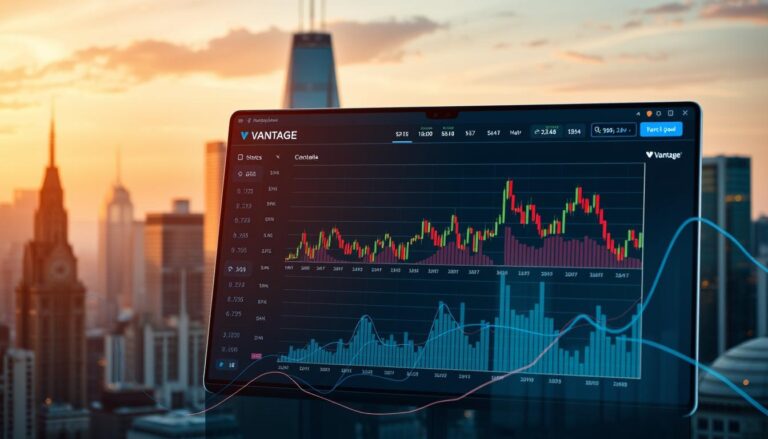How to Pass a Prop Firm Challenge on the First Try: Complete Guide
Proprietary trading has gained significant traction among retail traders in recent years. With the rise of funded accounts, many are seeking opportunities to trade with larger capital without risking personal funds. However, succeeding in a prop firm challenge requires more than just luck.
First-attempt success is crucial to avoid retake fees and time loss. According to Beo Forex, 97% of their evaluations are completed successfully within 14 trading days. This highlights the importance of a structured approach combining strategy, psychology, and risk management.
Funded accounts offer significant advantages, enabling traders to achieve 10-15% monthly returns on capital exceeding $200k. Yet, common pitfalls cause 80% of self-attempted challenges to fail. Understanding the critical differences between these evaluations and standard trading is key to success.
Understanding Prop Firm Challenges and Why They Matter
Trading with a proprietary firm has become a popular choice for those looking to scale their trading careers. These firms provide access to significant capital, allowing traders to amplify their returns without risking personal funds. This model benefits both parties: traders gain financial leverage, while firms share in the profits.
What Is a Proprietary Trading Firm?
A proprietary trading firm, often referred to as a prop firm, provides traders with access to its capital in exchange for a share of the profits. These firms operate on a profit-sharing model, where traders retain a significant portion of their earnings, typically ranging from 50% to 90%. This structure allows traders to focus on their strategies while minimizing personal financial risk.
How Funded Accounts Work
Funded accounts are the ultimate goal for many traders working with prop firms. To access these accounts, traders must first complete an evaluation process. This process usually involves two phases: the Challenge and the Verification. During the Challenge, traders must meet specific profit targets while adhering to strict risk management rules. Successful completion leads to the Verification phase, where consistency is tested.
Once both phases are completed, traders gain access to a funded account. For example, a $100,000 account with a 10% monthly target can generate $10,000 in profits. The profit split varies by firm, with some offering up to 95% in favor of the trader.
| Firm | Profit Split | Evaluation Process |
|---|---|---|
| FTMO | 80%-90% | Two-phase: 10% and 5% targets |
| MyForexFunds | 75%-85% | Multiple routes: Rapid, Accelerated, Evaluation |
| Hola Prime | 95% | Single-phase: 10% target |
These firms also implement capital protection rules, such as maximum daily and total drawdown limits, to ensure responsible trading. Additionally, trading through a prop firm may offer tax advantages compared to personal accounts, making it an attractive option for many traders.
Key Rules and Requirements to Pass a Prop Firm Challenge

Navigating the rules of proprietary trading evaluations can be daunting for newcomers. Each firm has specific requirements that traders must meet to succeed. Understanding these guidelines is crucial for achieving consistent results.
Profit Targets and Drawdown Limits
One of the primary requirements is meeting profit targets. In Phase 1, traders typically need to achieve an 8-10% profit. Phase 2 often reduces this target to 5%. These goals test a trader’s ability to generate consistent returns.
Equally important are drawdown limits. Most firms enforce a maximum daily or total drawdown of 5%. For example, losing $1,125 on a $25,000 account breaches a 4.5% daily limit, leading to failure. Traders must monitor their risk management closely to avoid such pitfalls.
Trading Day Minimums and Maximums
Time constraints are another critical factor. Many firms require a minimum of 14-30 trading days to complete the evaluation. Some, like InfinityForexFunds, allow unlimited trading days, offering more flexibility.
However, traders must also avoid overtrading or inactivity. Exceeding position sizing limits, such as 1-5% per trade, or holding positions over weekends can lead to penalties. Understanding these rules ensures a smoother evaluation process.
Essential Strategies to Pass a Prop Firm Challenge

Effective strategies are the cornerstone of success in proprietary trading evaluations. Traders must combine technical skills, disciplined risk management, and adaptive strategies to meet evaluation goals. This section explores actionable approaches to enhance performance and secure funded accounts.
High-Probability Trade Setups
Identifying high-probability setups is crucial for consistent results. Traders should focus on liquidity zones and order block formations. These areas often attract institutional activity, increasing the likelihood of successful trades.
For example, during the London/New York session overlap, volatility spikes create opportunities. A 60-pip US30 trade with a 0.01 lot size can yield significant returns while minimizing risk. Such setups align with the 1:3 reward-to-risk ratio recommended by Beo Forex.
Scalping vs. Swing Trading Approaches
Choosing the right trading style depends on market conditions and personal preferences. Scalping involves quick, short-term trades, often targeting 10-20 pips. This approach suits traders who thrive in fast-paced environments.
In contrast, swing trading focuses on holding positions through support and resistance levels. For instance, a EUR/USD trade held over several days can capitalize on broader market trends. Both styles require thorough analysis and a clear plan.
Using Price Action and Smart Money Concepts
Price action and smart money concepts provide valuable insights into market behavior. Traders can use patterns like head-and-shoulders breakdowns to identify potential reversals. These setups are particularly effective when combined with stop hunts and break-of-structure entries.
Backtesting is essential to validate these strategies. A minimum of 200+ trade samples ensures reliability. Documenting trades in a journal, as seen in a case study of 1,237 trades over six months, helps refine skills and adapt to changing market conditions.
| Strategy | Key Features | Example |
|---|---|---|
| Scalping | Short-term, high-frequency trades | 60-pip US30 trades |
| Swing Trading | Holds positions through key levels | EUR/USD support/resistance trades |
| Price Action | Focuses on candlestick patterns | Head-and-shoulders breakdowns |
Risk Management: The Backbone of Successful Challenges

Mastering risk management is the cornerstone of thriving in trading evaluations. Without a solid plan, even the best strategies can lead to significant losses. This section explores how disciplined risk management can protect capital and enhance performance.
The 1% Rule and Reward-to-Risk Ratios
One of the most effective techniques is the 1% rule. This strategy limits risk to 1% of the account balance per trade. Even after 10 consecutive losses, the account retains 90% of its value. This approach ensures long-term sustainability.
Beo Forex enforces a 1:3 reward-to-risk ratio, meaning potential profits should be three times the risk. For example, risking $100 aims for a $300 profit. This balance maximizes gains while minimizing losses.
Avoiding Emotional Trading Decisions
Emotions can derail even the most disciplined traders. Revenge trading and overtrading are common pitfalls. Revenge trading occurs after a loss, leading to impulsive decisions. Overtrading stems from fear of missing out, often resulting in unnecessary trades.
Implementing a trading checklist can help. This tool ensures every trade aligns with the plan, reducing emotional interference. Automated tools like equity guard EAs also enforce risk management rules, preventing costly mistakes.
Psychological discipline is key. Sticking to the plan and avoiding emotional traps ensures consistent results. By focusing on risk management, traders can navigate challenges successfully.
Choosing the Right Prop Firm for Your Trading Style
Selecting the ideal proprietary trading firm can make or break your trading journey. Each firm offers unique conditions, platform options, and payout structures. Matching these features to your strategy ensures smoother evaluations and long-term success.
Comparing Profit Splits and Payout Speed
Profit splits and payout speed are critical factors when choosing a firm. Hola Prime, for example, processes payouts within one hour, while FTMO takes up to three days. Faster payouts improve cash flow, allowing traders to reinvest quickly.
Profit splits also vary widely. Some prop firms offer up to 95% in favor of the trader. Others provide lower splits but include additional benefits like scaling plans or advanced platform tools. Understanding these options helps you maximize earnings.
Flexibility in Trading Hours and Instruments
Flexibility is another key consideration. Some firms allow weekend trading, while others restrict activity to weekdays. Similarly, access to diverse instruments like forex, indices, and commodities can enhance your strategy.
InfinityForexFunds stands out for its algo-friendly evaluations, catering to automated trading strategies. This flexibility ensures that traders can operate under optimal conditions, regardless of their preferred approach.
- Top firms for scalpers: Low-latency execution and tight spreads are essential.
- Best firms for EAs: Look for VPS compatibility and API access.
- Payout frequency: Weekly, bi-weekly, or monthly options cater to different needs.
- Leverage differences: Choose between 1:30 or 1:100 offerings based on your risk tolerance.
- Platform options: MT4/MT5, cTrader, or proprietary platforms suit various preferences.
Real-World Case Study: Passing a $50K Challenge in Two Days

A real-world example can provide valuable insights into how traders succeed in high-pressure evaluations. This case study highlights a trader’s experience in completing a $50K evaluation in just two days. By focusing on specific trades and disciplined strategy, the trader achieved a remarkable profit of over $4,000.
Day 1: US30 Short Trade Breakdown
The first day began with a short trade on the US30 index. The trader identified a resistance level at 34,500, aligning with the volume profile and market structure. Entering the trade at this level, they managed a 2.5% gain.
Trade management included partial closes at 1:1 and 1:3 reward-to-risk ratios. This approach ensured consistent profit while minimizing risk. The analysis of market conditions played a crucial role in executing this trade effectively.
Day 2: EUR/USD and Final Push
On the second day, the trader focused on the EUR/USD pair. Using a head-and-shoulders pattern, they identified a breakdown point at 1.0950. This setup resulted in a 110-pip move, contributing significantly to the overall performance.
The final push involved a 245-point scalp on the US30, leveraging breakout momentum. This trade showcased the trader’s ability to adapt to changing market conditions. By maintaining emotional control and adhering to a no-Monday trading rule, they achieved an 89% win rate.
Automated vs. Manual Trading: Which Works Best?

Deciding between automated and manual trading is a critical choice for traders aiming to optimize their strategies. Both approaches have unique advantages and challenges, making it essential to understand their differences. Automated trading relies on algorithms, while manual trading depends on human decision-making. The right choice depends on your trading style, conditions, and goals.
When to Use Expert Advisors (EAs)
Expert Advisors (EAs) are automated tools that execute trades based on predefined rules. They operate 24/7, removing emotional biases and ensuring consistent performance. EAs are ideal for traders who prefer a hands-off approach or lack time for constant monitoring.
For example, Perceptrader AI, an advanced EA, achieved a 100% success rate in three months. It uses deep learning algorithms to adapt to changing market conditions. EAs also require a reliable platform and a Virtual Private Server (VPS) for uninterrupted operation.
The Perceptrader AI Experiment
Perceptrader AI has demonstrated impressive results in both backtesting and live trading. A seven-year backtest showed an annual return of 21.95%, with a simulated profit of $686k. Its settings, such as a 0.25 deposit load and 5-pip spread filter, ensure optimal performance.
However, EAs come with higher initial costs. A Perceptrader license costs $1,620, compared to $899 for prop firm challenges. Despite this, many traders find the investment worthwhile due to its consistent results and adaptability.
| Feature | Automated Trading | Manual Trading |
|---|---|---|
| Emotion Removal | Yes | No |
| Adaptability to News Events | Limited | High |
| Drawdown | 16.76% | 8.2% |
| Firm Compatibility | 73% allow EAs | 100% |
- EA advantages: 24/7 trading, emotion-free execution, and consistent performance.
- Manual trading benefits: Adaptability to news events and greater control over trades.
- Hybrid approach: Combines EA execution with manual oversight for balanced results.
Psychological Discipline for Prop Trading Success

Psychological discipline is the cornerstone of thriving in high-pressure trading evaluations. Studies show that 68% of failed challenges involve rule violations, often due to emotional decision-making. Developing a strong mindset and sticking to a well-defined plan can significantly improve performance and lead to consistent success.
Patience and Avoiding Overtrading
Patience is a critical skill for traders. Many fall into the trap of overtrading, especially after a loss. Implementing a maximum of three trades per day can help maintain focus and prevent unnecessary risks. A pre-market routine, such as a 45-minute analysis ritual, ensures traders are prepared and less likely to make impulsive decisions.
Stress management techniques, like the 4-7-8 breathing method, can also reduce anxiety during trading sessions. One trader reported a 23% improvement in performance after adopting meditation practices. These tools help maintain emotional balance and enhance decision-making skills.
Sticking to Your Trading Plan
Adhering to a plan is essential for long-term success. A checklist verification system ensures every trade aligns with predefined rules, reducing errors by 41%. Traders should also conduct regular confirmation bias audits to avoid cognitive pitfalls that can skew judgment.
Accountability systems, such as trading coach check-ins, provide additional support. After a failure, a 48-hour cool-off period allows time to reflect and adjust strategies. Setting a 90% compliance target for plan adherence ensures consistency and minimizes deviations.
Your Next Steps Toward a Funded Account
Achieving a funded account requires a clear roadmap and disciplined execution. Start by selecting a firm that aligns with your trading strategy. High-frequency traders may prefer low-latency platforms, while swing traders might prioritize flexible evaluation periods.
Timing is crucial. Purchase your evaluation during high-volatility seasons to maximize opportunities. Immediately implement the 1% risk management rule to protect your capital. This ensures long-term sustainability and minimizes potential losses.
Document every trade in a standardized journal. This practice helps identify patterns and refine strategies. Consider professional evaluation services for additional guidance. They can provide insights tailored to your goals.
Monthly strategy reviews are essential for continuous improvement. As you progress, aim to scale from a $50k to a $1M account. Track profits meticulously for tax preparation and engage with trading communities for support and motivation.
With these steps, you’ll be well on your way to success in prop trading. Remember, consistency and discipline are key to unlocking your potential as a trader.



